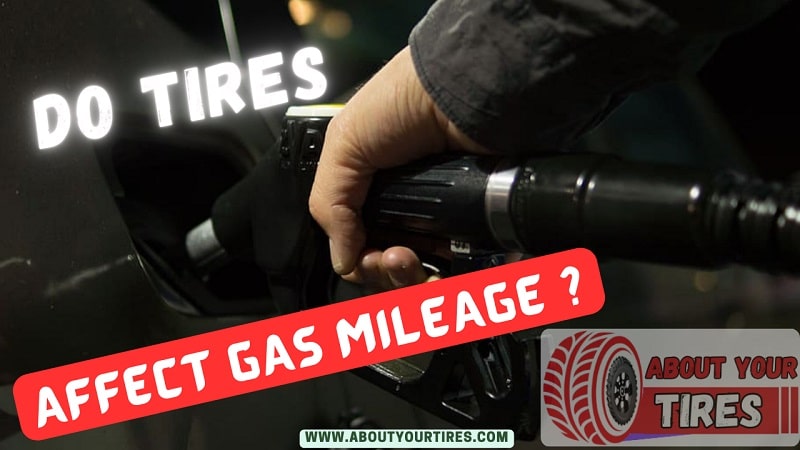As you pull up to the gas station, you’ve probably wondered about the ever-increasing cost of fuel. With fuel prices perpetually rising, it’s no surprise that many motorists are seeking ways to enhance their vehicle’s fuel economy. Do Tires Affect Gas Mileage? While the impact of proper maintenance and driving habits on gas mileage is well-known, the role of tires in this equation often goes unnoticed. In this comprehensive article, we will unravel the intricate relationship between tires and fuel efficiency. So, fasten your seatbelts, because we’re about to embark on an educational journey into the fascinating world of tires and their impact on gas mileage.
Types of Tires and Fuel Efficiency
Before we delve into the intricate details of how tires influence gas mileage, let’s take a moment to comprehend the various types of tires and their implications on fuel efficiency.
All-Season Tires
All-season tires are the most commonly chosen option for everyday driving. They offer a balanced blend of performance across different weather conditions, making them a preferred choice. However, their adaptability comes at a price – they are not the most fuel-efficient choice available.
Summer Tires
Summer tires are engineered for warm weather and high-performance driving. While they provide exceptional traction and handling, their contribution to fuel economy may be limited, particularly during colder seasons.
Winter Tires
Winter tires are optimized for cold and snowy conditions, ensuring superior grip. However, their unique tread design can lead to increased rolling resistance, subsequently impacting gas mileage.
Tire Pressure – The Overlooked Gas Mileage Factor
Significance of Proper Inflation
One of the most critical aspects of maintaining optimal fuel efficiency is ensuring that your tires are adequately inflated. When tires are underinflated, a larger portion of the tire’s surface comes into contact with the road, leading to heightened rolling resistance. Consequently, your engine has to exert more effort to propel the vehicle, resulting in diminished gas mileage. On average, each 1 psi (pound per square inch) decrease in tire pressure can lead to a 0.2% reduction in fuel efficiency. While it may appear negligible, the cumulative impact can be substantial.
Monitoring and Sustaining Tire Pressure
To maintain properly inflated tires, consult your car’s manual or the sticker inside the driver’s door jamb for the recommended tire pressure. Employing a straightforward tire pressure gauge will help you ascertain whether your tires meet these specifications. Regular inspections and maintenance can translate into considerable savings at the pump.
Rolling Resistance – The Friction Factor
Understanding Rolling Resistance
Rolling resistance pertains to the force opposing tire motion as it rolls along the road. This resistance results from the deformation of the tire as it makes contact with the ground, generating friction, a known adversary of fuel efficiency.
Tire Tread and Rolling Resistance
Tire tread design significantly influences rolling resistance. Tires with deep and aggressive treads may offer superior traction in challenging conditions but can also increase rolling resistance. Conversely, tires featuring smoother, low-rolling-resistance treads are engineered to enhance gas mileage.
Tire Size and Fuel Efficiency
Size Matters in Tire Selection
In the realm of tires, size indeed matters. Larger tires possess a greater surface area in contact with the road, potentially increasing rolling resistance and diminishing fuel efficiency. Smaller tires, in contrast, have the potential to deliver improved gas mileage. When contemplating a tire replacement, consider downsizing to a smaller, more fuel-efficient tire size to save on fuel.
Tire Weight – The Impact of Heaviness
Embracing the Lighter Side
In the quest for optimal fuel efficiency, every ounce carries significance. The weight of your tires can impact your vehicle’s overall weight, and heavier tires necessitate more energy to initiate motion. When in the market for new tires, inquire about their weight and opt for lighter alternatives whenever possible.
Alignment and Balance – The Tire Trinity
Tire Alignment
Maintaining proper tire alignment is fundamental in ensuring that all four wheels operate harmoniously. Misaligned tires can lead to uneven wear and heightened rolling resistance, subsequently impairing fuel efficiency.
Tire Balance
Balancing your tires is vital to guarantee uniform wear and a smooth driving experience. Imbalanced tires can produce vibrations that disrupt fuel efficiency and overall driving comfort.
Speed and the Impact on Gas Mileage
The Conundrum of Speed
While the thrill of high-speed driving is undeniable, it does come at a cost. As your speed increases, the energy required by your tires to overcome air resistance also escalates. Maintaining a steady and reasonable speed on the highway can notably enhance your gas mileage.
A Touch of Humor
Rolling Along Toward Savings
As we conclude our exploration into the technical facets of tire impact on fuel efficiency, let’s infuse a bit of humor into the discussion. Consider your tires as the “shoes” of your car. Just as you’d choose comfortable sneakers for a long walk, your vehicle deserves the appropriate set of “shoes” to help it confidently navigate the road while saving fuel. So, next time you’re at the gas pump, take solace in the fact that your tires are diligently working to keep your hard-earned dollars in your pocket, all while providing a safe and occasionally amusing ride. Safe and efficient driving, always!

